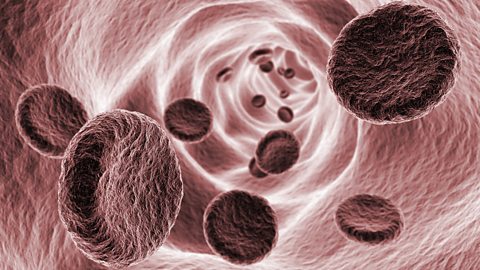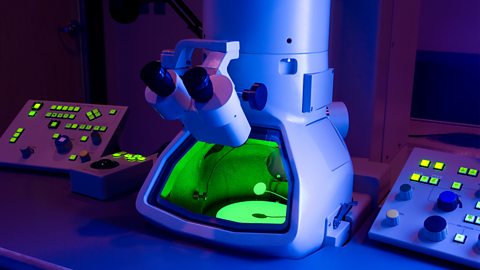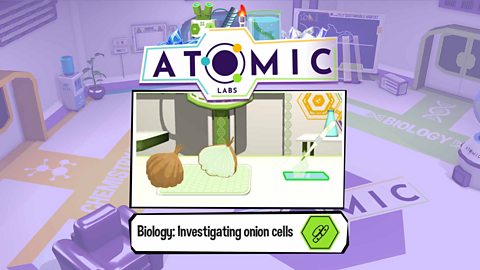What are cells?
All living things are made up of tiny, microscopic units which we call cells.
What are animal cells made up of?
Animal cells are made up of many different elements:
| Structure | Function |
|---|---|
| Nucleus | Control centre of the cell. It contains the cell’s genetic information arranged in chromosomes. |
| Chromosomes | Threadlike structure found in the nucleus. Made of DNA which contains the genetic information of the cell. |
| Cytoplasm | Chemical reactions take place here. |
| Mitochondria | Site of cell respiration. Very abundant in cells that need a lot of energy (eg muscle cells). |
| Cell membrane | A selectively permeable boundary surrounding the cell which allows some substances to enter and leave the cell while preventing others. |
| Nuclear membrane | Surrounds nucleus. |
Plant cells
Plant cells contain all of the elements which make up animal cells, but they also include:
| Structure | Function |
|---|---|
| Cellulose cell wall | A rigid structure outside the cell membrane that provides support. |
| Large permanent vacuole | Contains cell sap and when full pushes the cell membrane against the cell wall, providing support. |
| Chloroplasts | Contain chlorophyll, a green pigment that traps light for photosynthesis. |
Stem cells
Stem cells are simple, unspecialised cells found in animals and plants that have the ability to divide to form cells of the same type. They can also differentiate into a variety of specialised cells.
Stem cells can be harvested from embryonic umbilical cord or adult bone marrow.
Embryonic stem cells can form a full range of cell types but at an early stage most adult stem cells will have changed permanently into specialised cells, meaning they can’t specialise into anything else.
It is possible to collect stem cells from bone marrow, however these stem cells only form a limited range of cell types (blood cells).
In plants, stem cells can be found in the apicalThe tip or apex of a shoot or root, ie, the very top part of a plant structure where active cell division occurs. growing points, or meristemA plant tissue made of undifferentiated cells that can divide and differentiate into specialised plant tissues and organs. Meristems are important for plant repair and growth., at the end of shoots and roots.
The cells produced here are able to divide until they are in their final position in the root, stem or leaf.
Even then, their specialisation can be reversed under certain conditions.
This unique property means scientists are able to produce large numbers of genetically identical plants in a very short period of time by cloning.
Bacterial cells
Bacteria are single-celled organisms.
Key points to note when comparing and contrasting the structure of bacterial cells with animal and plant cells are that they:
Do not contain a nucleus
DNA is a circular chromosome that floats in the cytoplasm
Have a cell membrane
Have cytoplasm
Have a non-cellulose cell wall
Have plasmids - rings of DNA floating in the cytoplasm
What is specialisation?
Organisms can be:
Single-celled - where all life processes are carried out by one cell.
Multi-celled - where cells differentiate and become specialised to carry out a particular function (eg red blood cells carry oxygen).

Specialised cells are organised. There are different levels of organisation:
Cells with the same structure and function are known as tissue (eg muscle tissue).
Several types of tissue that carry out a particular function is an organ (eg the heart organ contains muscle and nerve tissue).
Organs that work together to carry out a particular function are known as an organ system (eg the circulatory system).
Test your knowledge
Magnification of cells activity
Play this game to see what different cells look like through different microscopes.
Game - onion cells
Play an Atomic Labs activity to look at onion cells under a microscope.
You can also play the full game
More on Cells
Find out more by working through a topic
- count3 of 3

- count1 of 3

